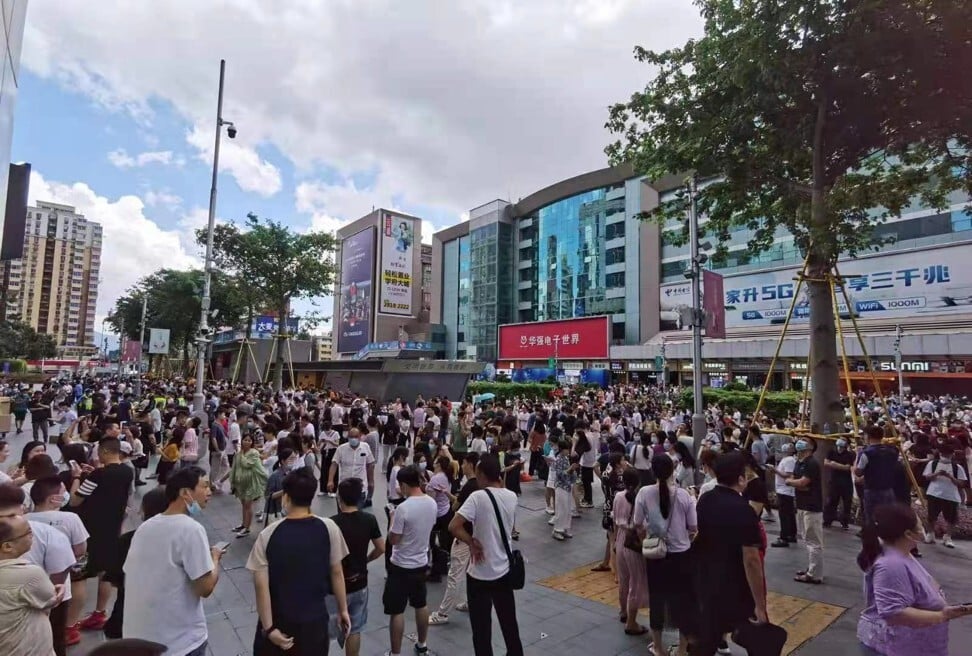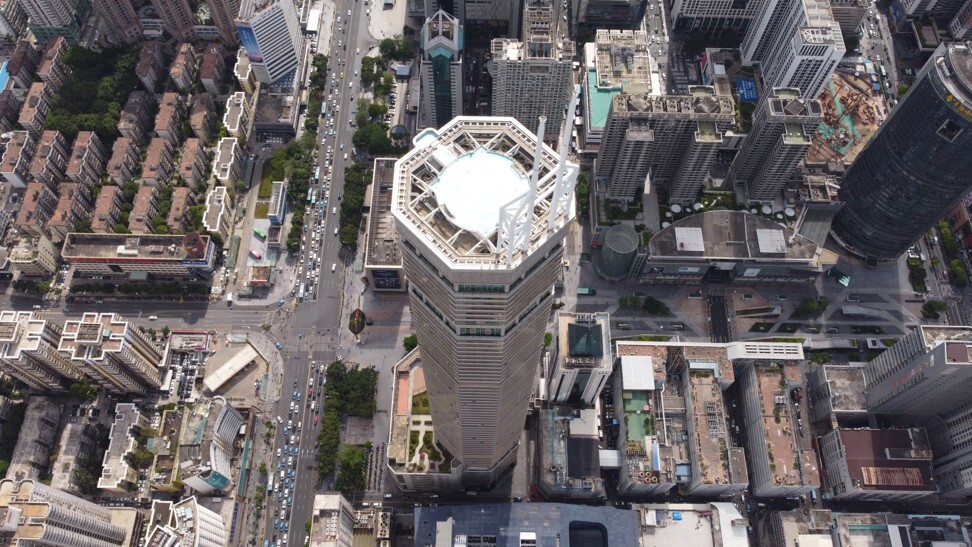
Shenzhen’s SEG Plaza reopens for tenants, minus the pair of 60-metre masts blamed by engineers for causing the tower to wobble
- A pair of 60-metre rooftop masts were dismantled, after engineers blamed them for the “vortex-induced resonance” that caused the SEG Plaza to wobble
- The removal of the masts would reduce SEG Plaza’s height to 292 metres (958 feet), kicking the building out of Shenzhen’s list of 10 tallest towers
A pair of masts measuring 60 metres (197 feet) that stood at the tower’s roof were dismantled, after engineers blamed them for the “vortex-induced resonance” that caused the building to tremble.
“After more than a month of work, the masts have been dismantled, and the building is structurally secure,” Shenzhen’s government said on its official WeChat account. “The tenants and vendors of the building have returned in an orderly fashion, starting on September 8.”
The renovation closes a chapter in the story of one of Shenzhen’s earliest skyscrapers, completed in 2000 as a symbol of the economic achievements of a city dubbed China’s Silicon Valley, which stands as the nation’s test bed of financial reforms and market liberalisation. The removal of the masts would reduce SEG Plaza’s height to 292 metres (958 feet), which would kick the building out of the city’s list of the 10 tallest towers.

Numerous theories emerged to explain the shaking at SEG Plaza, built in an earthquake-free city where the most recent temblor was a magnitude 3.8 event in November 2010 that was barely noticed.

Some experts attributed the shaking to the subway system running directly beneath the plaza. Another theory was the vibration caused by a massive array of air-conditioning units installed at the tower, all being switched on at the same time during the onset of summer. Construction sites nearby, with their piling, drilling and hammering, were also blamed.
“Let’s go home! SEG is our home forever,” said SEG Electronics Market, one of the city’s most famous wholesale electronics markets, on its official WeChat account. “We will conduct long-term monitoring over the building as advised by the investigators and will improve the daily maintenance to provide better service to the building’s tenants and merchants.”


